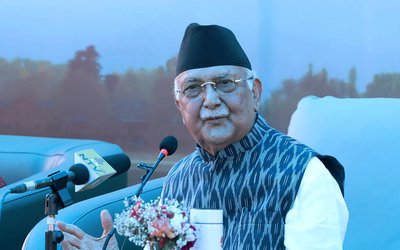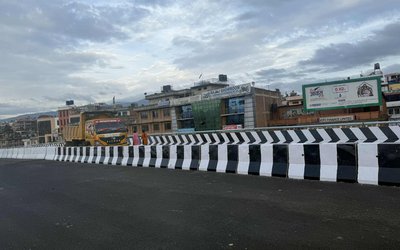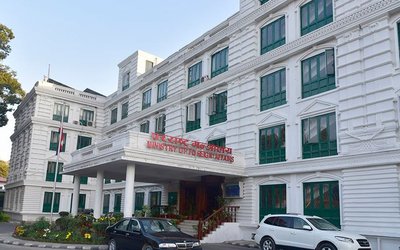More on News





I had heard a lot about Langtang and its beauty. So, when Ashok Bhurtyal from the Peoples Health Initiative (PHI) invited me to join his team to visit Langtang, I agreed.
“Are you sure you will have time to go with us?” Ashok asked several times to confirm I won’t change my mind about this long, difficult trip. I promised I was really eager to see the place which is so famous among trekkers.
Soon we were walking on the beautiful but difficult terrains from Syaphrubensi to Langtang. In eight hours, I was so tired that I asked Ashok why they had chosen to go so far? They could have organized their program somewhere near Kathmandu, perhaps a walk of 2 to 3 hours.
I was told that Langtang was chosen to start the first health camp and research activity. A public health student had done his undergraduate research when people had asked if his thesis would help the local people. The public health student felt that it was a moral duty to conduct health program in that part so that he could give back to the community which helped him to conduct the research. Warm welcome, nutritious food and open discussions involving the local villagers were very helpful for the student and his team (PHI) to finish that. At the same time, the profound beauty of Langtang was found to be so amazing for some of the health science (public health, medicine, pharmacy and nursing) students that they deiced to give back something to enjoy this beauty and to help villagers.
Ashok told me his first visit to Langtang was in May 2003, when he aimed at hard trekking and climbing small peaks. “Unable to resist the temptation posed by the beauty of the land, I went again in September that year. In 2004 I went twice to research people’s livelihood activities and the nature conservation efforts,” he said.
“In October-November 2005, on my descent from Mt. Langtang Lirung, I fell off into the river, injured heavily my arm and spent a scary and painful night by the side of the freezing river, gazing the stars. The next day, I managed to climb back to the trail and arrived at the nearest settlement. Villagers advised me to see a traditional orthopedic healer (Amchi ) . The healer fixed my arm bone, it worked!”
After this incident Ashok tried to find how the local Amchi (local doctor) did his job (which was like that of a medical doctor ) and also found that they had so much knowledge about the local herbs and people used that a lot in their daily lives. “In collaboration with medical students, we made it a point to visit Langtang at least once a year and to let people learn more about lives and local traditional herbs as well as to help people of the villages here” Ashok explained .
Indeed the program to help the people of Langtang went off quietly. It helped build the capacity of local people as well.
Ashok gave me more ideas about PHI work . “In March 2007, a landless peasant from Langtang joined Amchi training with assistance from PHI and a Tibetan medicine school in the Mt. Everest region. In May-June 2007, Langtang people and PHI started a campaign to improve health in Langtang. It was a mix of public health action and a medical camp. And then started the long-term program for improvement of health of villagers of Langtang.”
I was clearly able to see how people respected the members of PHI and how much they had hoped for their help. When the team came to the nearby village, the villagers were happy to greet it: “Wow, you have come again and brought doctors and medicines.” Villagers offered hot tea and even asked if we wanted to have the ‘local tea,’ that is, the home made wine.
It was amazing how kind people were to appreciate the good deeds. I was constantly thinking, “How the mighty river there could be brought to Kathmandu so that the people in there did not have to think about stealing water by water pumps at one O’Clock in the morning ( including myself) and how could we learn from the people of Langtang to clean our roads.”
Water falls in every corner of the long way to Langtang were astonishing and I hoped that for 2011, our government would be able to do some ads so that not only tourists but also Nepalese would be able to come to see these beautiful waterfalls, green trees, flowers and high mountains.
I remember Sri Lanka and Laos have some hills, mountains and small waterfalls. But the beautiful pictures of these places, prepared by the government, more alluring to the tourists. Friends from various countries were so happy that they were dancing near the waterfalls and looking so cheerful.
In Langtang, I was wondering if those tourists would come to Nepal. What would they say or do here? In fact I have not seen any ads of Langtang. Still the flow of tourists in this area is much. I was surprised that without much publicity, this place is so much visited. With better publicity and better road from Kathmandu to Dhunche and Syaphrubensi, how many more tourists (both Nepali and foreigners ) would come here?
I had to walk about 15 hours when I was coming back from Langtang to Syaphrubensi , which was of course a stupid idea as we had to walk through the jungle at 7 O’Clock to 9 O’ Clock in the dark and we were exhausted to death. Then my toe nails were broken. I suffered from pain for one whole week. Yet the beauty of this place is so enchanting that I will go there again with my family members to enjoy the water falls , to learn about local medical herbs and to talk to people about their lives and love stories, which is in every corner. (She writes on women and gender issue)







